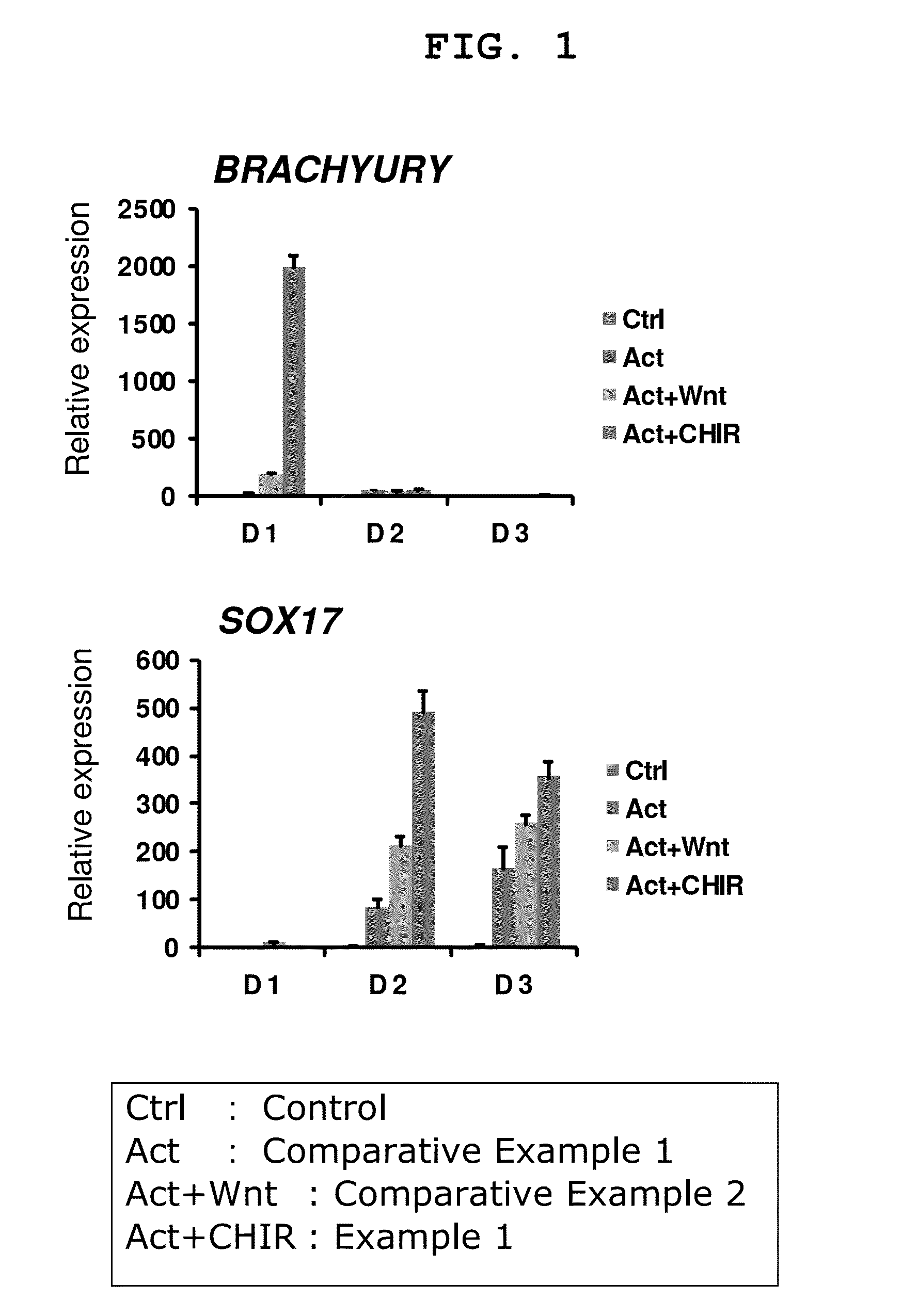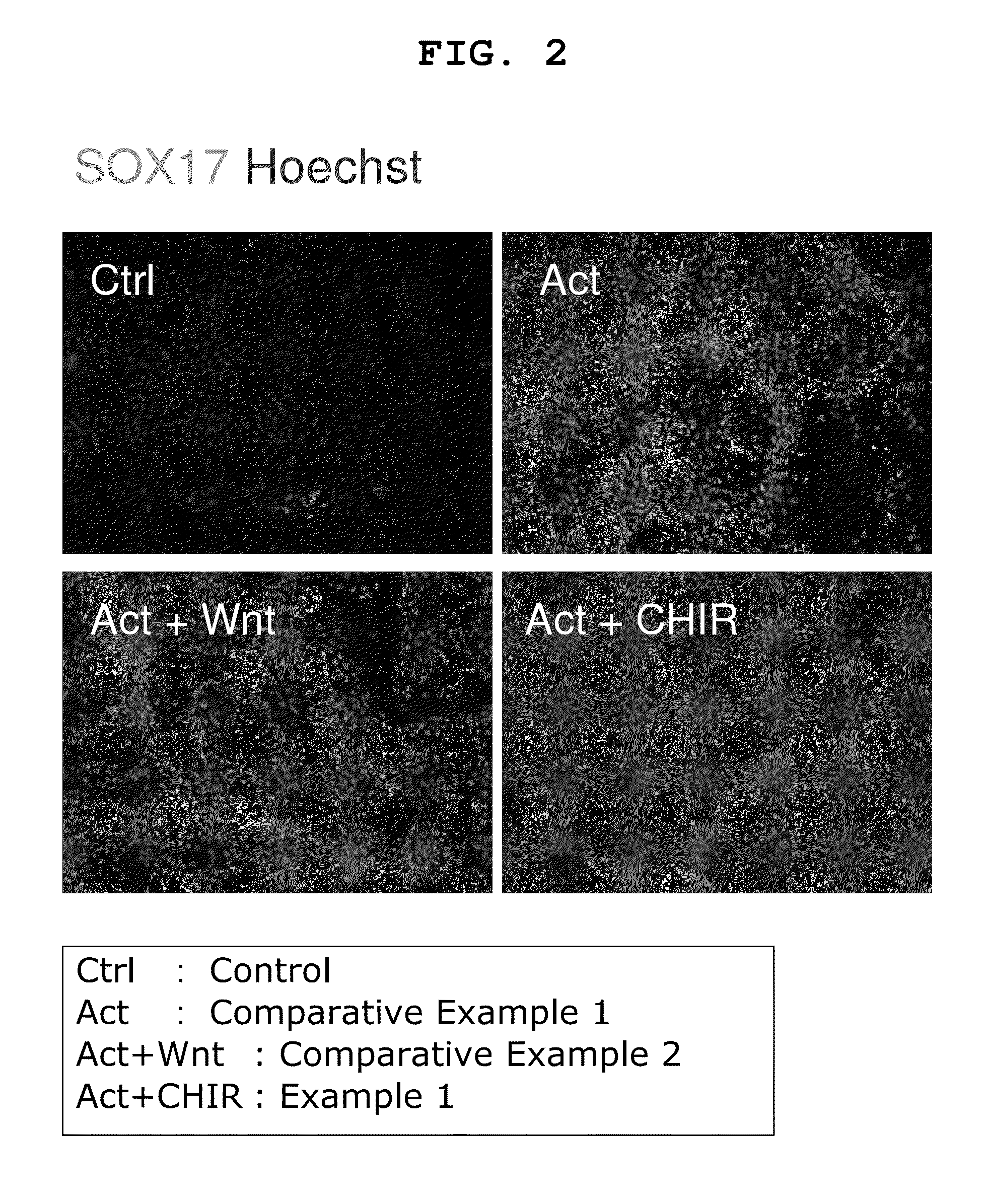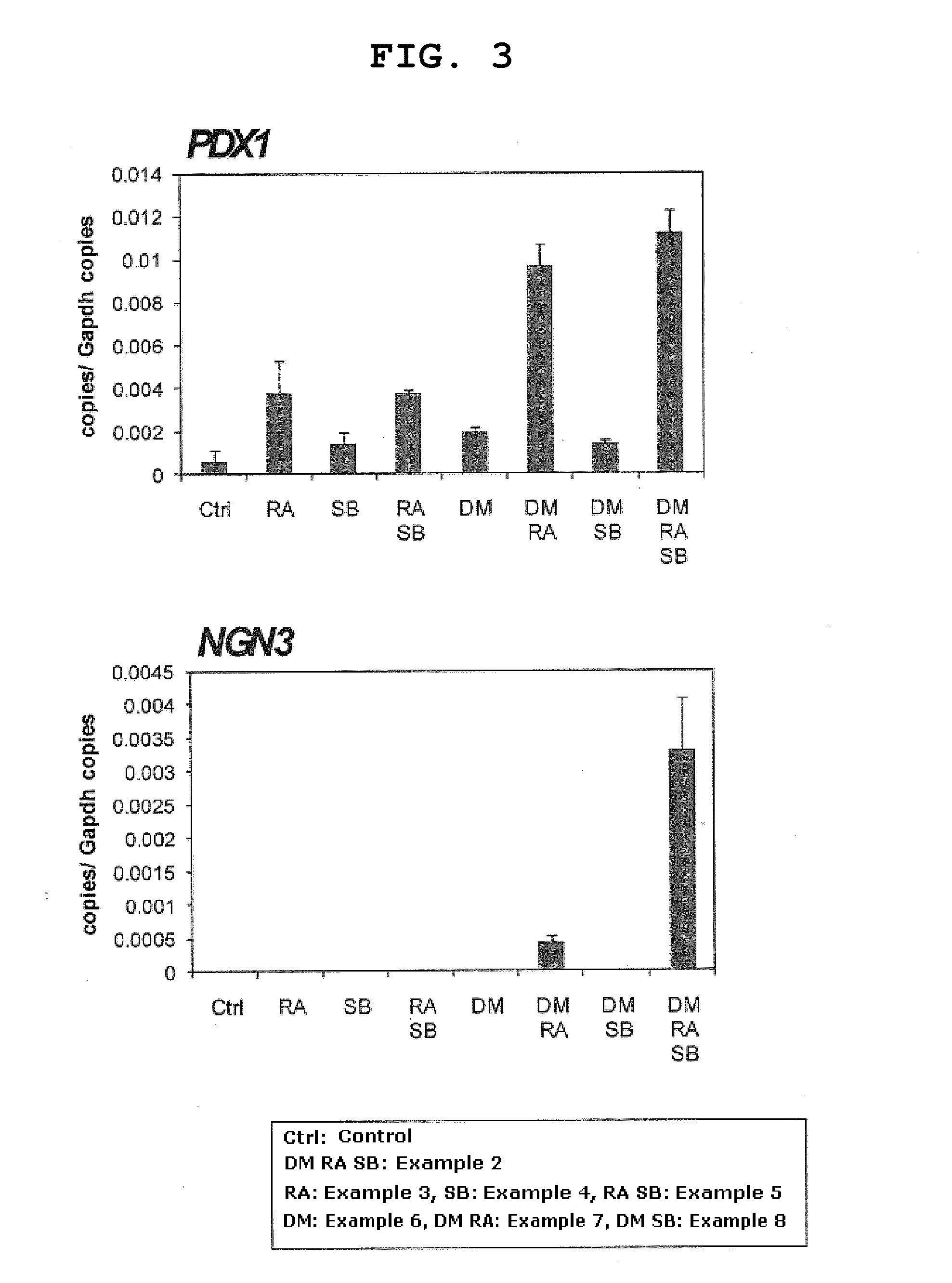Method for manufacturing pancreatic-hormone-producing cells
a hormone-producing cell and production method technology, applied in the direction of drugs, instruments, metabolism disorders, etc., can solve the problems of insufficient transplantation technique, insufficient pancreas and pancreatic islets, and difficult cure, etc., to achieve efficient production
- Summary
- Abstract
- Description
- Claims
- Application Information
AI Technical Summary
Benefits of technology
Problems solved by technology
Method used
Image
Examples
example 1
Induction of Differentiation of Human iPS Cells into Endodermal Cells by Using Activin A and CHIR99021 [Step (1)-Step (2)]
[0230]As a first stage for induction of differentiation of human iPS cells (iPS cells obtained by introducing Oct3 / 4 gene, Klf4 gene and Sox2 gene: see Nat Biotechnol 2008; 26: 101-106) into pancreas cells (particularly pancreatic hormone-producing cells), differentiation of human iPS cells was induced into endodermal cells by using a 96 well plate.
[0231]As the human iPS cells, 253G1 strain (iPS cell line produced by expressing OCT4 / SOX2 / KLF4 with retrovirus; Nature Biotechnology 26, 101-106) was used. Maintenance culture of the iPS cells in an undifferentiated state was performed using mitomycin-treated mouse fibroblast (MEFs) seeded on a gelatin-coated plate as feeder cells, and a medium for primate ES cells (ReproCELL Incorporated) added with 4 ng / ml bFGF (PeproTech EC) and 0.5× Penicillin-streptomycin (SIGMA) as a medium at 37° C. under 5% CO2. The medium was...
examples 2-8
Induction of Differentiation of Endodermal Cell into Progenitor Cells of Pancreatic Hormone-Producing Cells by Using Retinoic Acid, Dorsomorphin and SB431542 [Step (3)]
[0238]The cells differentiated into endodermal cells were further induced to differentiate into progenitor cells of pancreatic hormone-producing cells.
[0239]The cells induced to differentiate into endodermal cells according to the method shown in Example 1 was washed with Improved MEM Zinc Option medium (Invitrogen), and the medium was changed to Improved MEM Zinc Option medium (Invitrogen) containing 1% B-27 (GIBCO) and added with a combination of dorsomorphin (1 μM), retinoic acid (2 μM) and SB431542 (10 μM) (Example 2). The dorsomorphin is an inhibitor of AMP-activated protein kinase (AMPK), and an inhibitor of ALK2, ALK3 and ALK6 from among activin receptor-like kinases (ALK). In addition, SB431542 is an inhibitor of ALK4, ALK5 and ALK7 from among ALKs. After medium exchange, the cells were cultured under the cond...
examples 9-15
Induction of Differentiation of Pancreatic Progenitor Cells into Pancreatic Hormone-Producing Cells [Step (4)]
[0243]A method of inducing further differentiation of the later process in cells induced to differentiate into progenitor cells of pancreatic hormone-producing cells was considered.
[0244]To the cells differentiated into endoderm according to the method shown in Example 1 was added a differentiation-inducing factor (dorsomorphin, retinoic acid and SB431542 each singly or a combination thereof) in the same manner as in Examples 2-8. After culturing from day 3 to day 9, the cells were washed with Improved MEM Zinc Option medium (Invitrogen), and the medium was changed to Improved MEM Zinc Option medium (Invitrogen) added with 1% B-27 (GIBCO), and further cultured for 6 days (up to day 15 from the start of differentiation induction). In Example 9, a combination of dorsomorphin, retinoic acid and SB431542 was added; in Example 10, retinoic acid alone was added; in Example 11, SB4...
PUM
| Property | Measurement | Unit |
|---|---|---|
| concentration | aaaaa | aaaaa |
| concentration | aaaaa | aaaaa |
| concentration | aaaaa | aaaaa |
Abstract
Description
Claims
Application Information
 Login to View More
Login to View More - R&D
- Intellectual Property
- Life Sciences
- Materials
- Tech Scout
- Unparalleled Data Quality
- Higher Quality Content
- 60% Fewer Hallucinations
Browse by: Latest US Patents, China's latest patents, Technical Efficacy Thesaurus, Application Domain, Technology Topic, Popular Technical Reports.
© 2025 PatSnap. All rights reserved.Legal|Privacy policy|Modern Slavery Act Transparency Statement|Sitemap|About US| Contact US: help@patsnap.com



